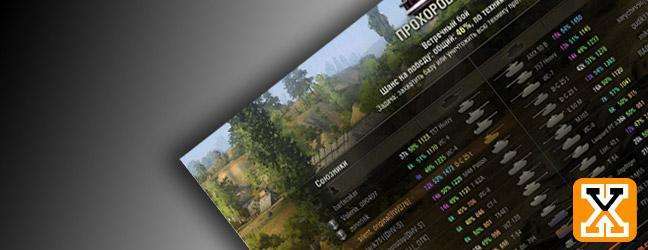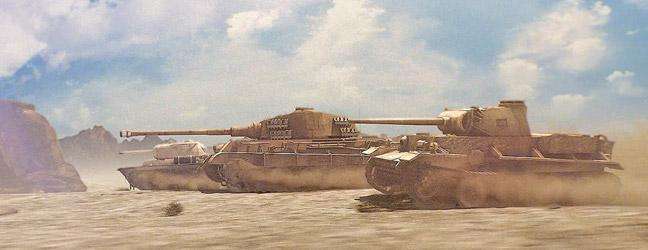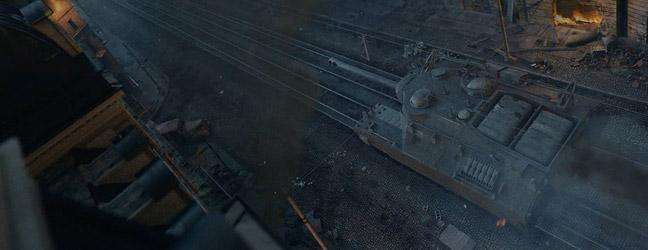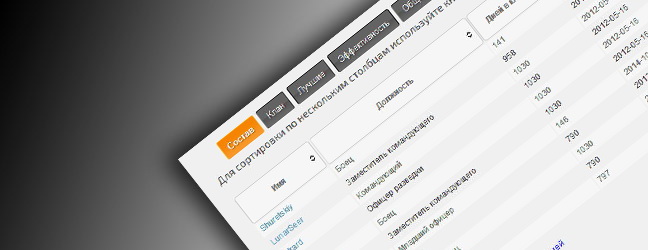Sir Churchill
Дата: 26.05.2011 13:25:43
admin: 
Tank Mk IV Churchill (another designation was A22) was the infantry tank of the British WWII army. The history of the heavy infantry tank Churchill started in September, 1939 when a technical design specification for A20 was developed in the General Staff. It was meant to substitute the heavy infantry tank Mk.II Matilda which was in large-scale production at this period. The necessity of the new more powerful combat vehicle was justified. WWII was starting and the British troops headed for the continent and their ways led to the Siegfrid Line…
It is interesting to note that Churchill appeared as a result of a contest run by the British military department. The main purpose of the contest was to design a vehicle that would be able to substitute Matilda II. The project was devoted to the new tank and Harland and Wolf company started working on it in September 1939 in Belfast. The military department intentionally divided the order in several parts. First of all they intended to attract a large number of companies to participate. Second, they meant to spread the existing experience and knowledge needed for armored vehicles production.
As a result of this policy in July, 1940 four prototypes of the ordered tank appeared. However, the works stopped. The British were so afraid of the German tanks that they were insisting on 80 mm armor, 15 m/h speed and the ability of overcoming vertical barriers 5 feet in height.
Basically A20 represented “an heir” to diamond-shaped tanks. There were quite a few alternatives regarding cannons: 6 pounder French 75 mm cannon, 76 mm howitzer and 2 pounder cannon. Eventually they chose to mount a pair of 2 pounder cannons: in the turret and in the frontal part of the hull as well as a machine gun in the frontal part of the hull. Four prototypes were ordered to be built in February, 1940. The testing of the prototype in June, 1940 was interrupted due to gear unit breakdown. And then it became clear that the 2 pounder cannon should be turned down in order to preserve mobility and passability.
***
This coincided with the evacuation of troops from Dunkirk, when the British had less than 100 tanks to protect the homeland. Therefore, designers were suggested to revise the draft project of A20 to ease its manufacture process, and to put the tank into mass production within one year. Mechanization Committee provided additional draftsmen, and the new prototype of A22 was introduced by November, 1940. 500 vehicles were to be produced, and the first 14 vehicles were supplied in June, 1941. The acceleration of the production program caused some defects, which led to frequent failures of the first series. November, 1941, Military Department Commission found at least 16 major structural defects, mainly in the transmission and running gear, which caused breakdowns even in the low-duty conditioned tanks, stationed in Britain. For example, 30 tanks of a tank battalion, consisting of 54 fighting vehicles, broke down during first tactical training in the field! At least one third of them were unable to reach the base on their own. The finished machining ended in 1943, and then the vehicle was named Churchill. The crews loved their fighting vehicles, mainly for the powerful armor protection. An episode, that demonstrated such protection, happened in the battles of the 50th Special Guard Breakthrough Tank Regiment. March 22, 1943, five Churchills of this regiment, conducted by the Guard Captain Belogub, attacked the enemy. Combat vehicles stormed German positions; four of them were hit and one came back to base. The crews did not leave the tanks, and March 22-25 they continued shooting the tanks from their stationary positions. Every night, 50th Tank Regiment crews brought food and ammunition for those tankers. And in three days the Churchills destroyed an artillery battery, four bunkers, ammunition depot and up to two infantry platoons. The Germans suggested the crews to surrender several times, but the Churchill crews responded with fire. On March 25 tank crews of the 50th Special Guard Breakthrough Tank Regiment managed to hook Belogub's tank with a tractor and to drag it to the backland. The crews of the other three tanks moved back with infantry. Despite any failed tactics that caused such situation, it should be emphasized that the crews had spent three days in tanks without losing a single man killed. Churchill's armor saved their lives. Moreover, the German artillery did not break through their armor plating either.
***
In late 1940's Churchills were taken out service in Britain and were deposited in the parks. But during the outbreak of hostilities in Korea they were brought into action again. The 25th Infantry Brigade Group was sent to the Far East, and a 7th Royal Tank Regiment's squadron, equipped with flame-throwing tanks Churchill Crocodile, joined that campaign too. The squadron landed in Busan on November 15th, 1950. Most of the tanks were moved to the front lines by rail, but some vehicles made a march along the highway, setting a record for the tanks of this type - 200 miles under their own power! The Squadron reached the front in the offensive of the Chinese Volunteers full swing. As the battles did not require the use of flamethrowers, Crocodiles were used as conventional cannon tanks.
*
UN forces retreated under the pressure of the Chinese troops. On January 4 Crocodiles of the Squadron “C” moved back over the river Han. By mid-January the front line stabilized. Till the end of the month Churchills acted in conjunction with U.S. troops. They joined to its 25th Brigade on 12 February 1951 and later took part in the counteroffensive in the area of the river Han. Churchills were moving in combat infantry and fired over the sights at firing-points of the enemy. After emerging from the battles on February 21 almost all the vehicles needed repairing and maintenance service. Squadron “C” left Korea in October 1951. It should be mentioned that in Korean War along with the flame-throwing Crocodiles participated armored recovery and repair vehicles Churchill ARV of the 8th Royal Irish Hussar Regiment. Recovery vehicles pulled damaged Centurions and other vehicles out of the battles and helped to clear away rubbles on the roads.
*
After the Korean War Churchill tank has never participated the combat actions. Soon the tanks of this type were decommissioned. Engineering vehicles remained operational a bit longer. In particular, combat engineer vehicle Churchill AVRE (Post war modification) kept operational in the British army until 1965.

Tank Mk IV Churchill (another designation was A22) was the infantry tank of the British WWII army. The history of the heavy infantry tank Churchill started in September, 1939 when a technical design specification for A20 was developed in the General Staff. It was meant to substitute the heavy infantry tank Mk.II Matilda which was in large-scale production at this period. The necessity of the new more powerful combat vehicle was justified. WWII was starting and the British troops headed for the continent and their ways led to the Siegfrid Line…
It is interesting to note that Churchill appeared as a result of a contest run by the British military department. The main purpose of the contest was to design a vehicle that would be able to substitute Matilda II. The project was devoted to the new tank and Harland and Wolf company started working on it in September 1939 in Belfast. The military department intentionally divided the order in several parts. First of all they intended to attract a large number of companies to participate. Second, they meant to spread the existing experience and knowledge needed for armored vehicles production.
As a result of this policy in July, 1940 four prototypes of the ordered tank appeared. However, the works stopped. The British were so afraid of the German tanks that they were insisting on 80 mm armor, 15 m/h speed and the ability of overcoming vertical barriers 5 feet in height.
Basically A20 represented “an heir” to diamond-shaped tanks. There were quite a few alternatives regarding cannons: 6 pounder French 75 mm cannon, 76 mm howitzer and 2 pounder cannon. Eventually they chose to mount a pair of 2 pounder cannons: in the turret and in the frontal part of the hull as well as a machine gun in the frontal part of the hull. Four prototypes were ordered to be built in February, 1940. The testing of the prototype in June, 1940 was interrupted due to gear unit breakdown. And then it became clear that the 2 pounder cannon should be turned down in order to preserve mobility and passability.
***
This coincided with the evacuation of troops from Dunkirk, when the British had less than 100 tanks to protect the homeland. Therefore, designers were suggested to revise the draft project of A20 to ease its manufacture process, and to put the tank into mass production within one year. Mechanization Committee provided additional draftsmen, and the new prototype of A22 was introduced by November, 1940. 500 vehicles were to be produced, and the first 14 vehicles were supplied in June, 1941. The acceleration of the production program caused some defects, which led to frequent failures of the first series. November, 1941, Military Department Commission found at least 16 major structural defects, mainly in the transmission and running gear, which caused breakdowns even in the low-duty conditioned tanks, stationed in Britain. For example, 30 tanks of a tank battalion, consisting of 54 fighting vehicles, broke down during first tactical training in the field! At least one third of them were unable to reach the base on their own. The finished machining ended in 1943, and then the vehicle was named Churchill. The crews loved their fighting vehicles, mainly for the powerful armor protection. An episode, that demonstrated such protection, happened in the battles of the 50th Special Guard Breakthrough Tank Regiment. March 22, 1943, five Churchills of this regiment, conducted by the Guard Captain Belogub, attacked the enemy. Combat vehicles stormed German positions; four of them were hit and one came back to base. The crews did not leave the tanks, and March 22-25 they continued shooting the tanks from their stationary positions. Every night, 50th Tank Regiment crews brought food and ammunition for those tankers. And in three days the Churchills destroyed an artillery battery, four bunkers, ammunition depot and up to two infantry platoons. The Germans suggested the crews to surrender several times, but the Churchill crews responded with fire. On March 25 tank crews of the 50th Special Guard Breakthrough Tank Regiment managed to hook Belogub's tank with a tractor and to drag it to the backland. The crews of the other three tanks moved back with infantry. Despite any failed tactics that caused such situation, it should be emphasized that the crews had spent three days in tanks without losing a single man killed. Churchill's armor saved their lives. Moreover, the German artillery did not break through their armor plating either.
***
In late 1940's Churchills were taken out service in Britain and were deposited in the parks. But during the outbreak of hostilities in Korea they were brought into action again. The 25th Infantry Brigade Group was sent to the Far East, and a 7th Royal Tank Regiment's squadron, equipped with flame-throwing tanks Churchill Crocodile, joined that campaign too. The squadron landed in Busan on November 15th, 1950. Most of the tanks were moved to the front lines by rail, but some vehicles made a march along the highway, setting a record for the tanks of this type - 200 miles under their own power! The Squadron reached the front in the offensive of the Chinese Volunteers full swing. As the battles did not require the use of flamethrowers, Crocodiles were used as conventional cannon tanks.
*
UN forces retreated under the pressure of the Chinese troops. On January 4 Crocodiles of the Squadron “C” moved back over the river Han. By mid-January the front line stabilized. Till the end of the month Churchills acted in conjunction with U.S. troops. They joined to its 25th Brigade on 12 February 1951 and later took part in the counteroffensive in the area of the river Han. Churchills were moving in combat infantry and fired over the sights at firing-points of the enemy. After emerging from the battles on February 21 almost all the vehicles needed repairing and maintenance service. Squadron “C” left Korea in October 1951. It should be mentioned that in Korean War along with the flame-throwing Crocodiles participated armored recovery and repair vehicles Churchill ARV of the 8th Royal Irish Hussar Regiment. Recovery vehicles pulled damaged Centurions and other vehicles out of the battles and helped to clear away rubbles on the roads.
*
After the Korean War Churchill tank has never participated the combat actions. Soon the tanks of this type were decommissioned. Engineering vehicles remained operational a bit longer. In particular, combat engineer vehicle Churchill AVRE (Post war modification) kept operational in the British army until 1965.
 News from the Front\Developers Blog\Sir Churchill
News from the Front\Developers Blog\Sir Churchill













